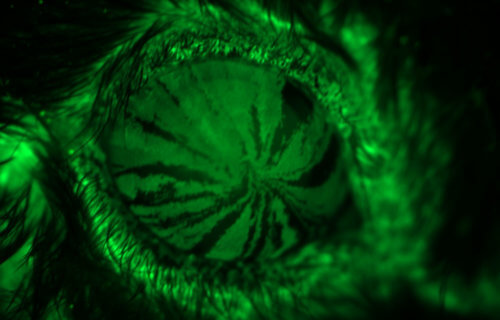ST. LOUIS, Mo. — People with very dry eyes may be at increased risk of vision loss, a new study warns.
Researchers from Washington University School of Medicine in St. Louis say the condition alters how the protective cornea on the eye’s surface heals itself after injury. However, experiments on mice found proteins made by stem cells help regenerate the cornea, opening the door to better therapies.
Dry eye disease occurs when the eye can’t provide adequate lubrication with natural tears. The common disorder is treated with drops that replace the missing tears. Unfortunately, the cornea — which keeps out germs and dirt — becomes more susceptible to damage.
“We have drugs, but they only work well in about 10% to 15% of patients,” says senior investigator Rajendra Apte, MD, PhD, the Paul A. Cibis Distinguished Professor in the John F. Hardesty, MD, Department of Ophthalmology & Visual Sciences, in a university release.
“In this study involving genes that are key to eye health, we identified potential targets for treatment that appear different in dry eyes than in healthy eyes. Tens of millions of people around the world — with an estimated 15 million in the United States alone — endure eye pain and blurred vision as a result of complications and injury associated with dry eye disease, and by targeting these proteins, we may be able to more successfully treat or even prevent those injuries.”
Nearly 3 in 5 adults suffer from dry eye syndrome
Symptoms may appear to be a slight irritation, but it could lead to more severe and long-term effects. It can develop after someone strains their eyes or if they genetically lack the ability to produce enough tears to lubricate their eyes.
Dry eye syndrome can make driving and reading uncomfortable and lead to light sensitivity. It can even affect concentration, endangering other people on the roads. Study authors tracked movements of stem cells in mouse eyes as they differentiated into corneal tissue.
They analyzed genes expressed in several models of dry eye disease, diabetes (which can lead to blindness), and other conditions. They found that in mice with dry eye disease, the cornea activated the expression of a gene called SPARC. Higher levels of this protein displayed a connection to better healing.
“We conducted single-cell RNA sequencing to identify genes important to maintaining the health of the cornea, and we believe that a few of them, particularly SPARC, may provide potential therapeutic targets for treating dry eye disease and corneal injury,” says first author Joseph Lin, an MD/PhD student in Apte’s lab.
Dry eyes can sting or burn. The condition is aggravated by travelling on planes, being in an air-conditioned room, cycling, or looking at screens for several hours.
“These stem cells are important and resilient and a key reason corneal transplantation works so well,” Apte explains. “If the proteins we’ve identified don’t pan out as therapies to activate these cells in people with dry eye syndrome, we may even be able to transplant engineered limbal stem cells to prevent corneal injury in patients with dry eyes.”
The study is published in the Proceedings of the National Academy of Sciences.
South West News Service writer Mark Waghorn contributed to this report.

